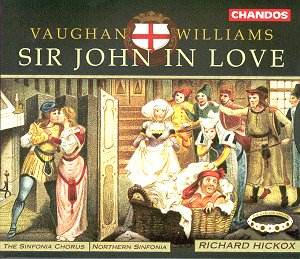 Composer: Ernst von Dohnányi
Composer: Ernst von Dohnányi
Works: American Rhapsody Op.47, Harp Concertino Op.45, Romanza (from Serenade in C Op.10) arr Sitkovetski, Violin Concerto No.2 Op.43, Wedding Waltz Op.18 No.4
Performers: Janice Graham (violin), Lucy Wakeford (harp), English Sinfonia / John Farrer
Recording: Watford Colosseum 3-5 October 2000
Label: ASV CD DCA 1107
Ernst von Dohnányi, a composer often overshadowed by his contemporaries, emerges with compelling clarity in this recording that showcases his melodic genius and orchestral craftsmanship. The program spans a significant portion of Dohnányi’s oeuvre, revealing not only his evolution as a composer but also the rich tapestry of influences that shaped his music. The selection includes his last orchestral work, the American Rhapsody, alongside two concertos and a delightful Wedding Waltz, providing an illuminating snapshot of a composer who, though often associated with the Hungarian tradition, embraced and transformed American idioms during his exile.
Janice Graham’s performance in the Violin Concerto No. 2 is a particular highlight. Her interpretation captures the concerto’s duality—beginning with a stark, almost ominous texture before blossoming into lush, lyrical passages reminiscent of Korngoldian romanticism. The first movement’s astringent opening gives way to a vibrant exploration of thematic material, and Graham’s sweet-toned articulation deftly navigates the intricate cadenzas, showcasing both technical prowess and emotive depth. The work’s orchestration, marked by rich textures and contrasting dynamics, is faithfully rendered by the English Sinfonia under John Farrer’s direction, who successfully balances the lushness of the orchestral backdrop with the soloist’s voice.
The Harp Concertino, a single-movement gem, allows Lucy Wakeford to shine, demonstrating exceptional command over her instrument while embodying the work’s French stylistic influences. The idiomatic writing, echoing the sensibilities of Debussy and Ravel, is executed with nuanced delicacy, particularly in the lyrical passages where the harp’s shimmering effects create a dreamlike atmosphere. Farrer’s conducting facilitates a seamless dialogue between the orchestra and soloist, ensuring the harp’s voice is not merely an embellishment but a vital narrative thread within the orchestral fabric.
Recording quality merits special mention; the engineering captures the nuances of each instrument, allowing for a transparent soundscape that highlights the distinct colors of Dohnányi’s orchestration. The spatial placement of the harp and violin against the orchestra is particularly well-managed, granting each soloist their moment to shine without overpowering the ensemble. This is an essential quality, especially in the context of Dohnányi’s orchestral writing, which often demands clarity amidst complexity.
Comparatively, this disc stands as a worthy companion to Chandos’s previous releases featuring Dohnányi’s works, such as the Suite and the Nursery Theme Variations. While those recordings delve into his earlier stylistic phases, this collection highlights his later, more mature language, marked by a synthesis of his Hungarian roots and American experiences.
Dohnányi’s music, particularly in these performances, reveals a composer who, while sometimes sidelined in the broader canon, offers a wealth of melodic and orchestral treasures deserving of greater recognition. This recording not only affirms Janice Graham and Lucy Wakeford’s virtuosic talents but also positions Dohnányi as a significant voice in the orchestral landscape of the 20th century. The artistry of the English Sinfonia under John Farrer’s baton, combined with the technical and expressive demands of the solo works, results in a compelling listening experience that resonates with both the heart and intellect.



